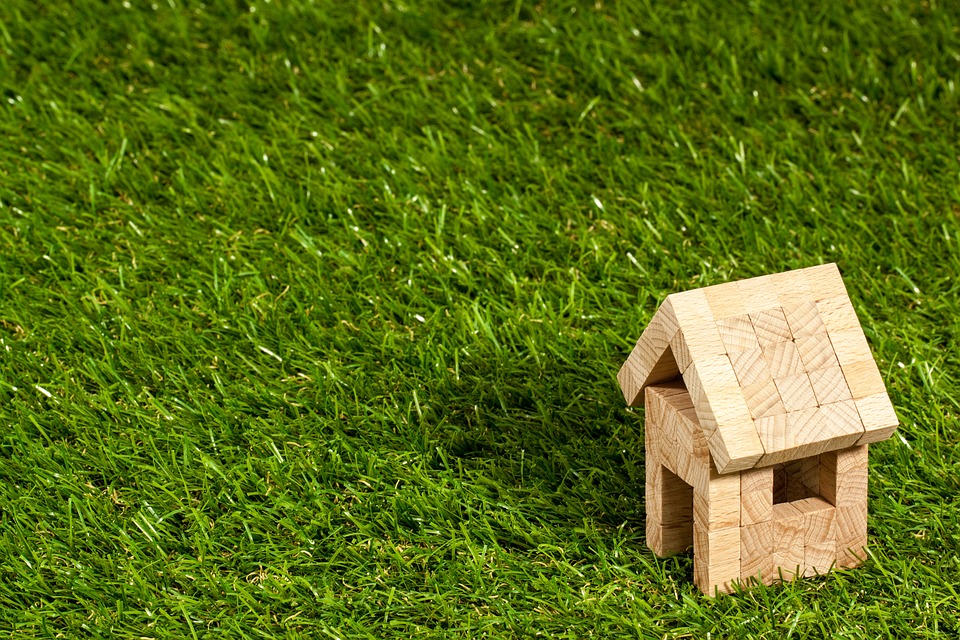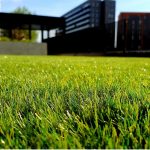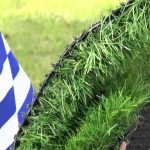To some people, the grass is just grass. Such people make little effort to differentiate between varieties and types of grass. To others, anything green, fluffy and lying on the floor to be stepped on is just grass.
But there is the evergreen, lovely artificial grass that can be used to spice up your lawn and all the unused space in your compound. With proper care and maintenance, artificial grass will amaze you and your visitors. It is easy to maintain and remain useful for a long time to come. Unlike natural grass, artificial grass requires less input; it does not require fertilizer, stays healthy throughout the year, easy to clean, no mowing and does not produce any lawn waste. However, if you have a hard time keeping these grasses, you can contact landscapers in Medway if you live in Kent or somewhere near Southern England.

Pets can drag items onto the grass, birds can deposit their waste on grass and leaves can fall from trees making your grass untidy but with just a little cleaning, all will be shiny again. A buildup of organic materials and general dirt can damage lawns’ drainage and encourage weed growth. In order to maintain a healthy and natural look on your grass, it is essential to clean it regularly. Here are some tips you can employ to maintain your synthetic grass:
Scheduled maintenance on a weekly basis
Brush your grass regularly: Just like natural grass blades, artificial grass blades should stand upright at all times. However, synthetic blades bend over time. Brush your grass using a brush or a rake to keep the blades upwards to maintain the natural look. This can be done with a stiff brush to keep blades upright and aligned. At any given time, ensure that you brush in the same direction against the grass grain/fiber. In case the blades are bending to a side, add some infill and spread it using a brush. Avoid using a brush with metal bristles as this can damage the grass.
Use blowers to remove leaf litter: Blowers are ideal for removing leaves and lightweight materials (debris) on your lawn without causing any damage. They are efficient and effective to use as they blow dry leaves off the artificial lawn quickly into piles that can be picked up for disposal. Unlike wet, dry leaves are easy to remove using blowers. To get rid of debris and another waste hose down the turf with water. If you do this on a regular basis, your lawn will remain sparkling clean for a long time.
Know your detergents
Stains should be removed before they harden and for a stain on the artificial grass. If you decide to use a detergent, pick a mild solution that will not damage your grass. Ensure that you know the chemical composition of your chosen detergent to determine whether it poses any harm to your grass.
Surface-IT Sydney advice that you use a soft cloth to rub the solution into the stain until it is dislodged and rinses the area with water from a garden hose. Do not use a strong detergent like bleach on your lawn as this will damage the threads and the synthetic material. Seek advice from the supplier of your retailer/manufacturer as some may be harmful. For heavy stains like motor oils and grease use a mineral spirit to wipe the blades of the grass.
Elimination of stench
Pet excrement and urine may make your artificial grass smelly and unpleasant to use. One of the most effective ways of removing them is by using an enzyme cleaner. Alternatively, use a hosepipe and plenty of water with a mixture of a household deodorizer like vinegar or use an artificial turf spray to clean away urine from your pets.
Bacteria in your lawn
Out of continued use, artificial grass collects bacterial spores, although in a lesser extent compared to natural grass. This is more likely to happen when you have pets. In this case, use a homemade solution of 50% vinegar to kill bacteria. You can also opt for industrial disinfectants
Remove weeds
Weeds are likely to grow if your yards’ sub-base is contaminated or if it was not excavated thoroughly. Weeds should be controlled by using a weed killer, brushing the lawn consistently to keep the fiber upright, andpicking the weeds.
Maintenance according to the seasons
During winter snow falls on your lawn and if stamped on to the grass an icy layer is formed. Do not remove compressed ice as this can damage your lawn by causing thinning of artificial grass. Areas where heavy snowfall is experienced, it should be allowed to melt naturally.
In summer when it is too hot during the day, you can simply pour water on the lawn to cool it down and protect it from damage caused by too high temperatures. Generally, high quality artificial grass is hardly affected by exposure to too much sunlight and therefore sun high-quality dimmer shouldn’t be cause for alarm.
Avoid keeping or using sources of heat near your synthetic grass. If hot items such as cigarettes, ashes from a fire pit or barbeque come into contact with artificial grass it will melt.
Conclusion
A synthetic lawn helps you save time and money in the long run. Following these simple care and maintenance tips will extend the life of your synthetic grass keeping it looking amazing for years to come giving your yard a natural look that you will always embrace.







